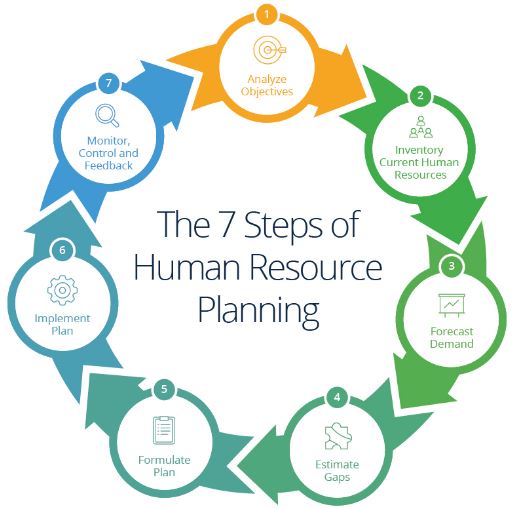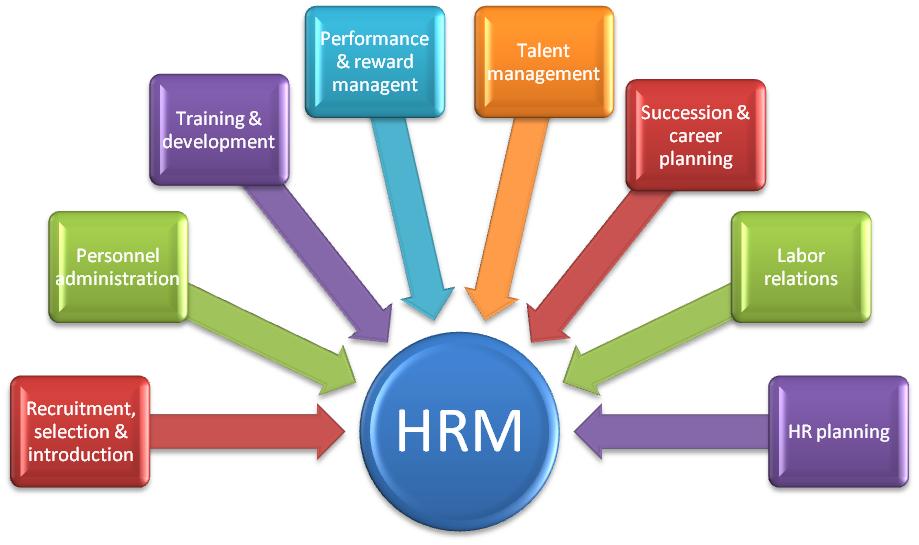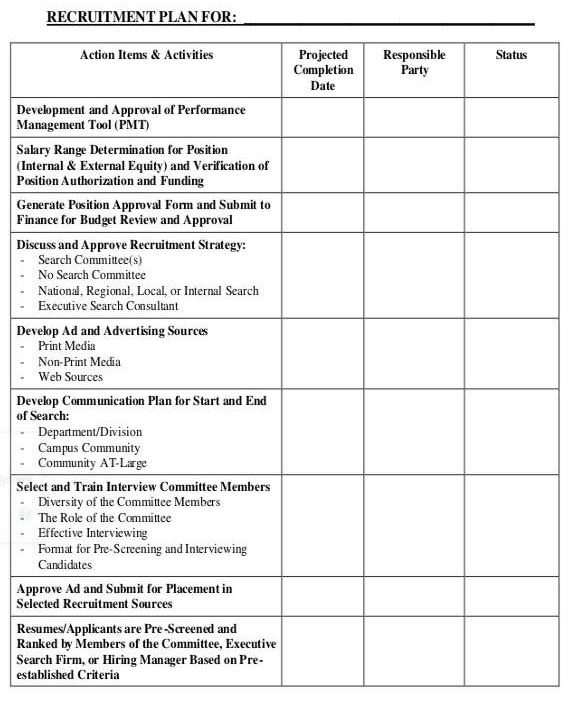Strategic people management is a key function in every organization. This article seeks to discuss the three strategic people management areas in England’s National Health Service (NHS). Specifically, the paper will analyze leadership and management, talent management, and training and development in the NHS. Finally, the paper will recommend ways forward for the NHS in keeping best practice and improving areas which are more problematic.
The competitive advantage of an organization is based on several things like investing in new technologies, financial management, and effective human resource management. The style in which people are managed in an organization has a critical role in achieving the goals of an organization. Poor management of people can lead to poor performance or to the collapse of the whole organization. To avoid the demerits associated with poor people management, three areas referred to as areas of strategic people management have been devised.
The three areas are leadership and management, talent management, and training and development (Bailey, Mankin, Kelliher, & Garavan 2018). This article seeks to compile a report on England’s National Health Service (NHS) department and highlight the importance of strategic people management.
In 1948, the NHS was established to manage and regulate health services in the United Kingdom. The objectives of establishing the trust were to offer comprehensive health services, free at point delivery, and to centralize the health services. 70 years after its establishment, the trust is yet to achieve some of its objectives. It has been accused of poor health care delivery, failure to cater to the ageing population, long waiting times, over management, and insufficient staff training. The junior staff of the trust have complained of high workloads while the senior management complains of poor funding. A report by King’s fund supported the claim that the trust is poorly funded and refurbished the allegations by the critics that the trust is over-managed (Ham et al., 2011).
Strategic People Management and Leadership
Great Man Theory of leadership suggests that everyone is born with certain leadership traits (Spector 2016). This theory means that if you put together several people to work together in different leadership positions, a great result can be obtained. The NHS in England has tried to employ this theory by having many leaders in each department. Over the last two decades, the trust has increased its number of leaders significantly. In England, there has been an increase of 37% in the number of leaders in the last 19 years. However, many leaders can lead to leadership bureaucracy because no single person can be held responsible for a failure. Managerial positions are entitled to managerial remuneration, therefore, increasing the number of leaders increases the administrative costs for the trust which is already under-funded.
The NHS has been attacked by political parties and other critics of being over managed. Currently, the trust has over 6000 board member and 700 doctors practicing as directors. The critics accuse the doctors of working as directors in contrary to their calling of treating people. However, positioning doctors as directors only cater for distributed leadership. Experienced doctors should the nurses and other doctors to address the issue of poor care and in implementing clinical processes. It is also easy for doctors to hold clinical officers accountable than other professionals. Health care is a complex service and should have many leaders. The NHS should not be accused of being over-managed due to the complex nature of health care.
The Audit Commission and the national audit office have accused the trust of poor leadership styles. Collectively, the two critics have accused the trust of spectacular managerial failures which has led to poor care, hospital acquired infections, surgery deaths, and long waiting times for the patients. Due to the increase in the aging population and the situations at hand such as long waiting times, the leaders have to change their leadership styles. The leaders seem to stick to their styles regardless of the increasing challenges in the trust. The contingency leadership theory suggests that leadership style should be changed to cater for certain situations for there is no single way of leadership. It is the high time that the leaders in the trust changes their style of leadership to address the current issues of long waiting times, poor care, and caring for the ageing population.
Exchange leadership theory urges that leadership is only effective when the leader gives a motivational value or a reward, either motivation or punishment to his follower (Zhang et al., 218). This theory means that a leader should be given sufficient time to reward and motivate the juniors. Demotivating the followers will lead to poor results. However, the current managerial culture in the NHS betrays the Exchange Theory of Leadership.
Leaders are given a short tenure of two years. Two years are insufficient to reward and motivate the juniors. In addition, the short leadership terms cannot enable the leaders to handle the problems in the trust. The external pressure from critics and political parties demotivates the managers. The leaders should be given room to lead the trust and managers should have longer tenure for them to address the current issues in the trust (Jiang, Hu & Wang 2018). Blame games demotivate the employees. The trust has a culture of blaming the employees or a manager in case there is a failure. The managers and medical directors have blamed the nurses and clinical officers for the failures in the hospitals. The blame games demotivate the nurses and the clinical officers rather than motivating them.
Training and Development
Service delivery is depended on the level of training staff gets before and on the job (Larsen, 2017). Job training gives one chance to learn through experiment (Saks 2015). Experimental learning theory suggests that one can best learn through experimentation, reflective observation, and abstract conceptualization.
Organizations should, therefore, have training sessions for their staff. Training also gives a chance to incorporate new staff into the current organizational culture. The NHS staff should be trained in managing people and on business finance. So far the NHS has shown a willingness on training its staff by coming up with business finance course aimed at training all their staff regardless of their positions. Changes in technology and continuous research by health professionals call for regular training to equip the staff with the new skills being invented in the health sector all of which can be deployed using strategic people management.
To train the employees, the NHS has established several courses. The employees can access short-term courses, bachelor’s degrees and master’s degrees. It gives a chance for nurses and clinical officers to subscribe to different courses and enhance their skills. This shows that the NHS is committed to improving the quality of health care it offers. The trust faces negative issues of caring for the ageing population and long waiting times. In contrast, none of the courses offered by the trust is concerned with the two issues.
Strategic People Management and Culture
It seems to be part of the NHS staff beliefs that long waiting times are normal and nothing should be done on that. A staff training should be carried out to change the attitude and beliefs on long waiting times. Theory of planned behavior purports that training changes the attitude and belief in certain behavior (Montano & Kasprzyk, 2015). The NHS, therefore, should organize training aimed at changing the attitude on long waiting times.

It is commendable that the NHS organize in-house induction with updates in statutory areas on annual basis. The NHS managers hold meetings with staff on a regular basis where training and development opportunities are discussed. The staff are also allowed to apply for funding in case of a professional development course. However, the course must fulfil a professional need and support of the manager is required.
The training offered by the NHS is only concerned with health care and not human resource management. Good health care can only be delivered under the effective leadership of people. The trust should come up with training programs aimed at equipping the staff with leadership skills. The trust participated in the South Central Leadership Program. The program was aimed at enhancing the leadership program for the senior staff. Skills development in health care is essential in health care and not a mere luxury. South Central Leadership Program should, therefore, involve all health staff regardless of the positions they hold. The NHS continues to call for applications of their courses which open to anyone who wished to work in the health care department.
Talent Management
The first step of managing talent is on recruitment (Davis, Cutt, Flynn, & Mowl 2016). The human resources department should come up with a rigorous recruitment process aimed at selecting the best staff to work for the trust. However, talent management is not a function purely on the human resources department. The top management has to manage talents once the employees have been selected.
The human resources departments should offer assessment tests before recruitment and give a probation period before an employee is confirmed. This will make sure that the best employees are employed by the trust. Once an employee secures the job, a room should be given to express self-initiative. However, the current situation at the NHS does not give room for self-initiative. The blame game from the managers and pressure on the employees due to high workloads impairs their self-initiative. The external pressure on managers by critics also scares the managers from expressing their self-initiative.
For performance appraisal, the NHS has come up with a policy to identify the poor performing employees. Employees performance will be assessed according to complains received from visitors, fellow employees, and the observation of the manager. In case of a poor performance the employee will be asked to give feedback to the manager. The managers are supposed to fill a performance form for each employee in their department.
However, the NHS does not propose differentiated workforce in its policy and only proposes penalties for the employees who perform poorly. In the differentiated workforce, the best performing employees are rewarded better than others (Collings 2017). The differentiated workforce is to recognize the best employees and to avoid losing the key and the experienced employees to other organizations.
The NHS also lacks a wide pool of talents since people from other organizations are reluctant to work for the trust due to undue pressure on its employees and high workloads compared to the people working in private hospitals and those working for NGOs. The trust also has a culture of appointing people who have worked for it before which keeps away candidates from the private sector and other government institution.
Conclusion and Recommendations
Strategic people management is very important for every organization and should never be undermined. Poor management of people results in poor performance of the whole organization. The NHC has many managers. However, due to the complex nature of the health department, it can be concluded that the trust is not over-managed. There should be clear roles for every manager to avoid leadership bureaucracy. The trust faces a lot of pressure from external bodies and within itself. The trust has a culture of blaming employees of any fault during the line of duty. The trust also has a culture of having short tenures for its managers.
The trust offers training for its staff but the training given is a drop in the ocean since it is not concerned with managing people. The training given is only concerned with increasing treatment knowledge to the staff. The trust lacks a wide pool of talents due to its recruitment policy which selects people who have worked for the trust before. The performance appraisal policy of the trust only forces the staff to perform better but it does not recognize the best performing employees through differentiated workforce. I wish to recommend the following to the NHS;
- The South Central Leadership Program should involve both junior and senior staff. This will increase the chances of creating future leaders for the trust.
- The public and critics should avoid giving undue pressure to the leaders of the trust and give them room to lead.
- The trust should increase the tenure of its leaders. A longer tenure will give them time to fix the current problems facing the trust.
- The NHS should recruit managers from the private sector and other government organizations. This will help in increasing its pool of talents.
- On top of South Central Leadership Program, the trust should establish a leadership center for mentoring future leaders, offering training, and to support innovative programs.
- Adopt a more robust approach in relation to strategic people management.
Bibliography
Bailey, C., Mankin, D., Kelliher, C. and Garavan, T., 2018. Strategic human resource management. Oxford University Press.
Collings, D.G., 2017. Workforce differentiation. Oxford handbook of talent management, pp.301-17.
Davis, T., Cutt, M., Flynn, N. and Mowl, P., 2016. Talent assessment: A new strategy for talent management. Routledge.
Ham, C., Baker, G.R., Docherty, J., Hockey, P., Lobley, K., Tugendhat, L. and Walshe, K., 2011. The future of leadership and management in the NHS: no more heroes. Report by The King’s Fund.
Jiang, Z., Hu, X. and Wang, Z., 2018. Career adaptability and plateaus: The moderating effects of tenure and job self-efficacy. Journal of Vocational Behavior, 104, pp.59-71.
Larsen, H.H., 2017. Key issues in training and development. In Policy and practice in European human resource management (pp. 107-121). Routledge.
Montano, D.E. and Kasprzyk, D., 2015. Theory of reasoned action, theory of planned behavior, and the integrated behavioral model. Health behavior: Theory, research and practice, pp.95-124.
Saks, A., 2015. Managing Performance through Training & Development, (Canadian ed.). Nelson Education.
Spector, B.A., 2016. Carlyle, Freud, and the great man theory more fully considered. Strategic People Management, 12(2), pp.250-260.
Zhang, X., Zhang, Y., Sun, Y., Lytras, M., Ordonez de Pablos, P. and He, W., 2018. Exploring the effect of transformational leadership on individual creativity in e-learning: a perspective of social exchange theory. Studies in Higher Education, 43(11), pp.1964-1978.
Relevant Posts
Recruitment Practices NHS Dissertation
Leadership Strategies for Improving Performance
I do hope you enjoyed reading this post strategic people management and how it impacts the NHS]. There are many other titles available in the HRM Dissertation Collection that should be of interest to human resource management students and CIPD professionals. There are many dissertation titles that relate to other aspects of HRM such as employee engagement, HRM Theory, absenteeism, training and development to name a few. It took a lot of effort to write this post and I would be grateful if you could share this post via Facebook and Twitter. Feel free to add your thoughts in the comments section. Thank you.




